The mountains are bigger, the snow is deeper, and the crowds are non-existent—the promised land of skiing is north of the border.Ěý
Alyeska
Girdwood, Alaska
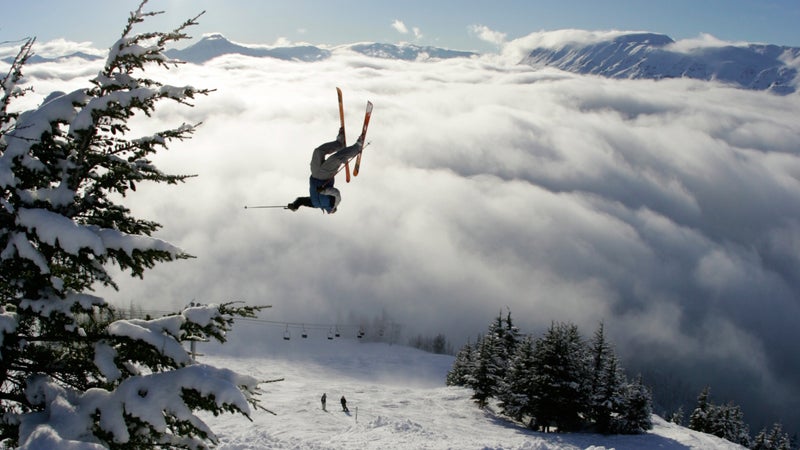
Vertical Rise: 3,200 feet
Acres of Terrain: 1,610
Average Snowfall: 512 inches
Winter days don’t see much sun this far north (less than six hours in January), but makes up for that with guaranteed deep powder, epic views of the Chugach Mountains, seven hanging glaciers, and 375 acres lit up for night skiing every weekend. The mountain caters to experts with 2,500 vertical feet of uninterrupted double-black terrain on Mount Alyeska’s north face. (We like the 1,000-foot, 50-degree Christmas Chute.) But the tree-lined runs near the base are ideal for beginners, and Nordic skiers can meander through six miles of groomed trails. The most convenient lodging is at , where you can nab a post-ski soak in the heated saltwater pool or an après yoga session—and don’t forget to arrange a midnight wake-up call for frequent aurora borealis light shows. Or get away from the bustle at , a family-owned log cabin in the woods two miles from the slopes, which comes with a full kitchen, wood-burning stove, and homemade blueberry bread. —Nick Davidson
Must-Ski Run: The 1,000-foot, 50-degree Christmas Chute on the north face of Mount Alyeska.
Best Après: Sitzmark Bar & Grill.
Local Tip: Get some extra adventure in with a backcountry heli-skiing expedition on 750,000 acres of untouched powder in the surrounding mountains with Chugach Powder Guides.Ěý
Lake LouiseĚý
Lake Louise, Alberta, Canada
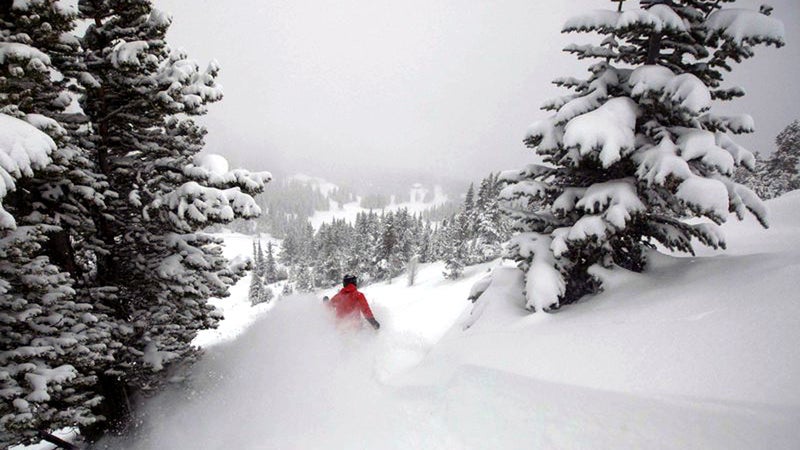
Vertical Rise: 3,250 feet
Acres of Terrain: 4,200
Average Snowfall: 179 inches
, located inside of stunningly scenic Banff National Park, is one of the largest ski areas in North America, with runs that suit all abilities. Fun slopes like Wiwaxy and Pine Cone help novices become comfortable and confident with their new skills. Intermediates will jive with terrain found off the Grizzly Express Gondola, including Deer Run on the front side and Pika on the back. Experts should head to the well-known Back Bowls or check out the snowcross course, which features cambered turns, gap jumps, drops, berms, andĚýsteep and flat sections. When hunger calls, grab sushi at Kuma Yama, or opt for a more local cuisine with an Alberta beef burger at Whitehorn Bistro. Stay in the village, either at the luxury lakeside or the budget-minded . —Kľ±łľĚýąółÜ±ô±ô±đ°ů
˛ŃłÜ˛őłŮ-ł§°ěľ±Ěý¸éłÜ˛Ô: Men’s Downhill, on the front side, is a mainstay of the World Cup circuit and open to regular joes the rest of the year.
µţ±đ˛őłŮĚý´ˇ±č°ůè˛ő: Grab pizza and beers at Powder Keg Lounge upstairs in the Lodge of the Ten Peaks.
Local Tip: Secure the first run of the day with the Lake Louise first tracks program, whichĚýgives guests access to the mountainĚýand a professional instructorĚýfor 90 minutes before the mountain opens to the public.
Red Mountain Resort
Rossland, British Columbia, Canada
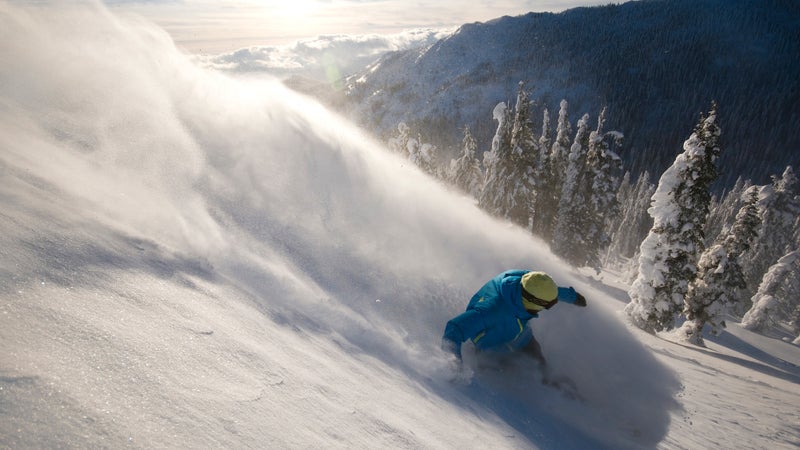
Vertical Rise: 2,919 feet
Acres of Terrain: 2,682
Average Snowfall: 305 inches
Two years ago, added 1,000 acres to itsĚýslopes with the opening of lift-served terrain on Grey Mountain, where moderate glades serviced by the Paradise chair will have intermediates cruising. Only 15 percent of the terrain at Red is designated for beginners, but there’s plenty to work with on Granite, the largest mountain of the three-peak resort—its lower slopes have terrain for all abilities. Those looking for tight trees and steep pitches can hit runs on the side of Granite’s MotherlodeĚýchairĚýlift. On Red Mountain, experts will enjoy tree-skiing in the War Eagle lines, dropping into the less intense Dale’s Trail or hucking in the Rockstar Energy Terrain Park. There aren’t a ton of lodging options at the base, which helps keep crowds sparse. We like the modern condos at the resort-owned, ski-in/ski-out . —K.ąó.
˛ŃłÜ˛őłŮ-ł§°ěľ±Ěý¸éłÜ˛Ô: The steep bumps of Towers of Red under the main Red Mountain chairĚýlift.
µţ±đ˛őłŮĚý´ˇ±č°ůè˛ő: Rafters Lounge in the day lodge, which occupies a 19th-century mining structure.
Local Tip: Red Mountain is a 2.5-hour drive from Spokane, Washington, which is serviced from most major U.S. airports. The road doesn’t cross any mountain passes, so it’s typically an easy drive.
Revelstoke
Revelstoke, British Columbia
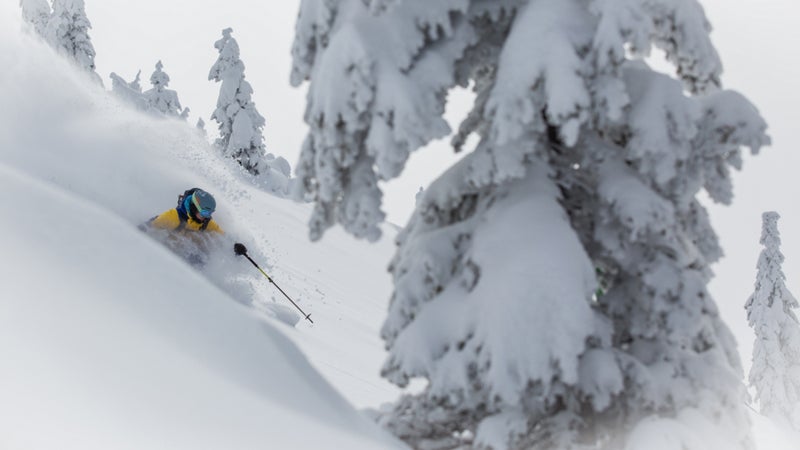
Vertical Rise: 5,620 feet
Acres of Terrain: 3,121
Average Snowfall: 400 inches
Ěý
British Columbia’s has the most vert of any North American resort. Skiing the thing top to bottom, which you can do on groomers Snow Rodeo and Devils’ Club, is a true leg-burning rite of passage. Not enough for you? You can get a full 6,000 vertical feet with an easy 15-minute hike from the top of the Stoke chair. That hike will also help you access North Bowl from the top, a craggy precipice that contains some of the steepest in-bounds skiing anywhere. Don’t blindly follow tracks here, because the mountains is home to some of the rippingest locals in Canada, and you may find yourself cliffed-out and crying for a rescue from ski patrol. Revelstoke got a full reboot in December 2007, expandingĚýfrom a tiny locals’Ěýhill sporting a lone double chair to the world-class ski area it is now. More modest is the base area: there’s only one hotel, the four-star , and a handful of restaurants, including the high-quality Rockford. That, of course, means more room for you. If you do get a powder day, go for Kill the Banker, Revelstoke’s iconicĚýcliff-and-pillow-studded double-black run that plunges 2,500 feet, directly under the gondola. —Frederick Reimers
Ěý
Must-Ski Run: The puckeringly steep lines on the backside like Powder Assault.Ěý
Best Après: In town, check out the Cabin, a cocktail lounge/bowling alley/snowboard shop where you can play a Canadian variation of bowling with only five pins and a grapefruit-sized holeless ball.
Local Tip: Before partying in town, hit the town’s aquatic center, an indoor swimming complex with waterslides, a lazy river, saunas, hot tubs, and a climbing wall overhanging the pool.
Tremblant
Mont-Tremblant, Quebec, Canada
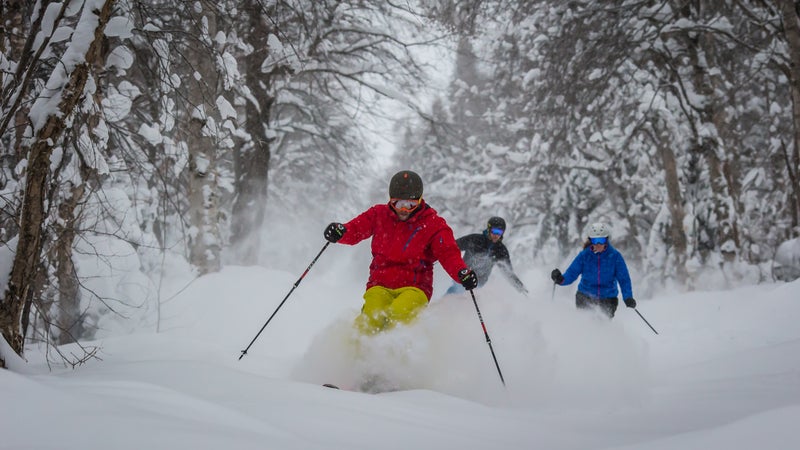
Vertical Rise: 2,226 feet
Acres of Terrain: 665
Average Snowfall: 163 inches
The bilingual staff in this French-speaking area make skiing at Ěýas close as you can get Chamonix this side of the Atlantic. It’s a great place to get on skis for the first time: there’s a vast array of green terrainĚýand more than 300 instructors in the ski school. The TAM-TAM Zone for kids is an on-mountain area with easy glades and moguls for fun learning. Nansen is the longest run on the mountain, but it’s a green, so it’s great for the family to see views of Lac Tremblant and cruise down at the end of the day. More advanced skiers aren’t left out: they can lay trenches on Erik Guay and Jasey-Jay Anderson, two runs named for local Olympians, and anything on the North Side is good for powder hounds after a snowstorm. At the base of Mont-Tremblant, have dinner at Coco Pazzo, which sources ingredients directly from farms in Quebec and Italy. Bunk down in the middle of everything at the in the heart of Tremblant village, mere steps from the lift. —K.ąó.
˛ŃłÜ˛őłŮ-ł§°ěľ±Ěý¸éłÜ˛Ô: La Griffe, a fun steep headwall on the North Side.
µţ±đ˛őłŮĚý´ˇ±č°ůè˛ő: Le P’tit Caribou in Mont-Tremblant has a fancy French name, but it’s the kind of place where you might end up dancing on the bar.
Local Tip: Stay in the resort village for free access to the mountain’s first tracks program, which get you a ride up 30 minutes before the official opening of the mountain.
Whistler/Blackcomb
Whistler, British Columbia, Canada
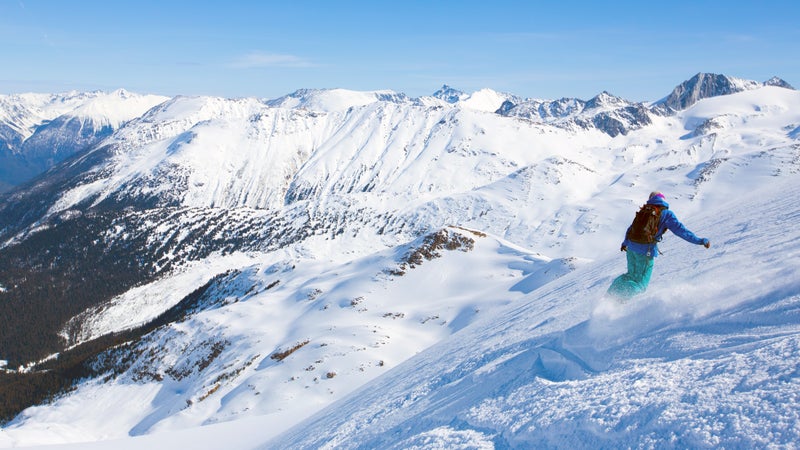
Vertical Rise: 5,020 feet (Whistler);Ěý5,280 feet (Blackcomb)
Acres of Terrain: 4,757 (Whistler);Ěý3,414 (Blackcomb)
Average Snowfall: 458 inches
Fly into Vancouver and take a car or bus along the stunningly scenic Sea to Sky Highway to the base of . If you stay in the village, you’ll never need to get in a car—the place has everything, from sushi to ski shops to late-night poutine. The next morning, start your quest on Blackcomb for views of glaciated terrain, T-bar-accessible steeps, and powder-stuffed chutes. Stop at the mountaintop Horstman Hut for a midday meat pie or bowl of stew. When you’re ready to check out Whistler’s wide-open bowls and endless groomers, hop aboard the 2.73-mile-long Peak 2 Peak Gondola to travel from one mid-mountain to the other. Whether it’s spring corn or powder, the precipitous slopes of Whistler Bowl are always good. End the day sabering a champagne bottle at the Bearfoot Bistro or shooting a round of pool at the Cinnamon Bear Bar. —Megan Michelson
Must-Ski Run: Spanky’s Ladder, a short bootpack from the top of Blackcomb’s Glacier Express, requires some effort, but experts will be rewarded with steep bowls filled with blown-in snow.Ěý
Best Après: The Garibaldi Lift Company—GLC to the locals—goes off starting around 4 p.m. You can watch skiers and riders come in for the day from your perch on the deck. Ěý
Local Tip: Sushi Village is the place to be seen, but the counter at Japanese grocer Fuji Market is the best place for quality sushi, udon, and ramen in a low-fuss atmosphere.



 Check out the rest of our
Check out the rest of our